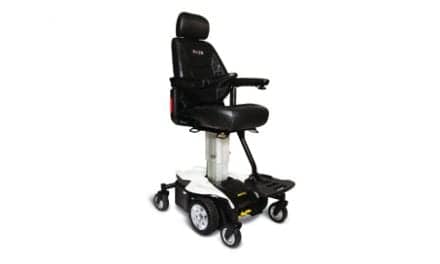“There, but for the grace of God, go I.”
—John Bradford, 16th century English Protestant martyr.
 |
In 1980, my friend David was shot point blank in the back and left for dead on the pantry floor of the Bel-Air, Calif, home he was house sitting. Fortunately, he did not die, but, the bullet had severed his spinal cord, and he was left to face a lifetime of limited use of his hands and arms, completely paralyzed from his waist down, and totally reliant on others to attend to his most basic needs.
Overnight, the life of this brilliant, fiercely independent young attorney was altered. After a year of therapy at a Los Angeles-based spinal injury rehabilitation center, and the determination of the facility’s physical and occupational therapy staff, David was able to resume living—with round-the-clock assistance—in his own home, as well as resume part-time work, go to temple, and the occasional social engagement, using his custom-adapted power wheelchair—which enables him to sit, elevate, tilt and breathe more freely. Not the life he had planned, but a life that has brought him a modicum of dignity and independence. And, if it had not been for the assistance of Medicare, state funding, and local programs within the Los Angeles area to help defray the costs of his mobility and daily care equipment, he would be sentenced to living out his life in a state- or federally funded nursing home—or worse.
|
Further information on power mobility devices can be found in Empowering Mobility. Also, the complete list of CMS power mobility device fee schedule amounts for all states can be accessed at the CMS web site. |
This is why I find the latest judgment by the Centers for Medicare and Medicaid Services to cut reimbursement for power wheelchairs an abomination. Beginning November 15, Medicare will pay power wheelchair suppliers approximately 35 percent less than they currently receive (Medicare now pays up to $6,130 for a typical power wheelchair, an amount that will be reduced to approximately $3,800, 38 percent less than current payment). Many severely disabled, long-term rehabilitation patients—most of whom are on fixed incomes (if not fortunate enough to be employed)—are already experiencing the ramifications of earlier cuts in the long-term nursing care system. This latest decision will significantly affect their access to the equipment and modifications needed to make an average day more bearable.
As the population of disabled and aging individuals increases in the years to come, the demand for power mobility and lifestyle devices will rise accordingly. It appears that as a population, we must take a critical look at our medical reimbursement system, and actively insist that our legislators cut the fat, and prioritize not cannibalize coverage for those who are most truly in need of the assistance—which could be any of us at any given time.
—Rogena Schuyler Silverman





